These are the most romantic spring flowers to give on Valentine's Day – and there’s not a rose in sight
Ditch the roses on February 14th in favor of these stunning and more sustainable alternatives, says this expert florist
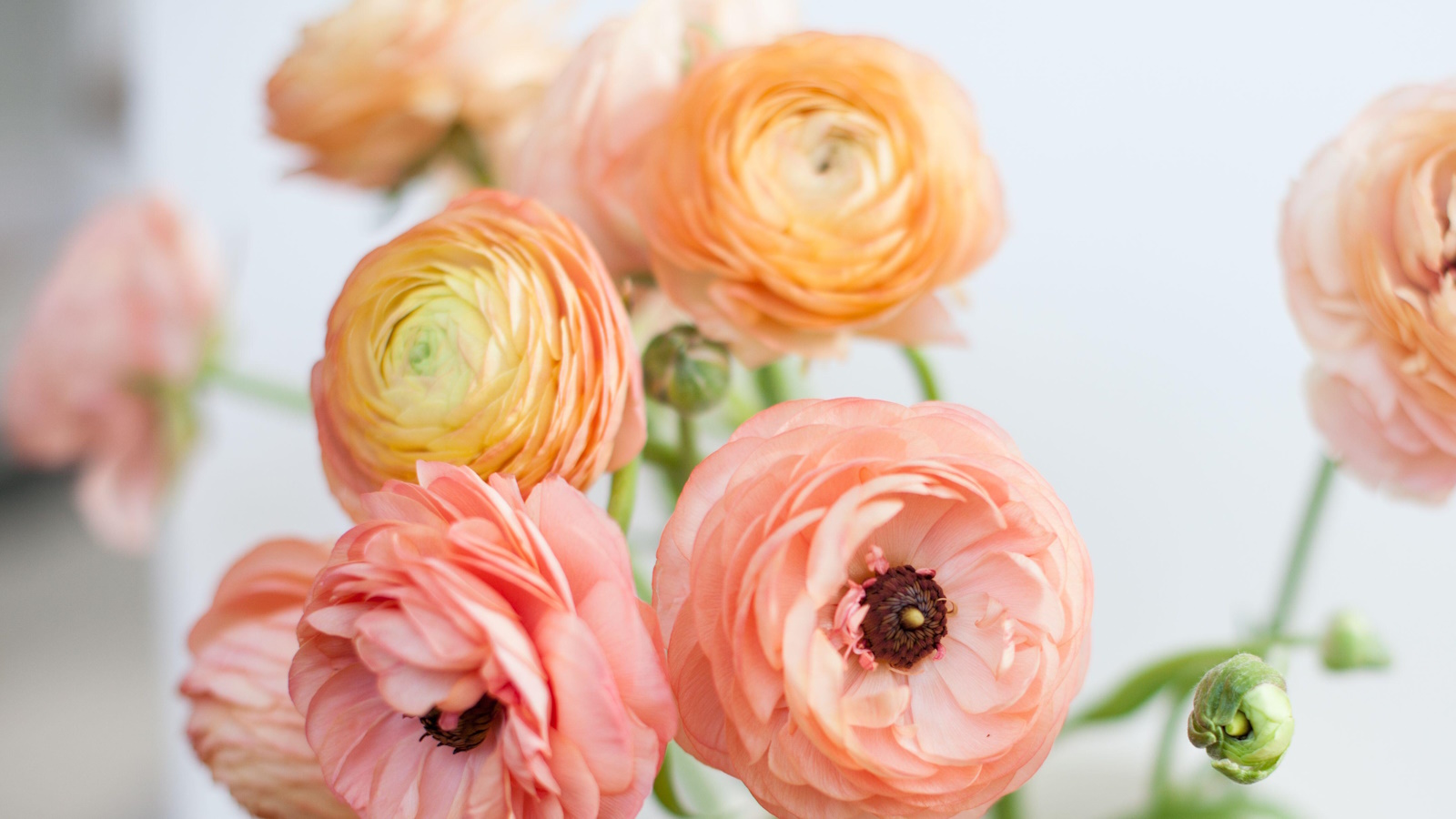

The grocery stores and high-street florists will very soon be oozing with rich, velvet roses, bursting from enormous bouquets and tied in luxurious ribbons.
As beautiful and romantic as these floral designs are, they come at an environmental cost. See, roses are not naturally in season in February, so everything we see and potentially buy has been grown on commercial farms, often in Ecuador and Kenya, and flown thousands of miles to reach the US.
I've learned over my years working in the floristry industry that, sadly, most farmed roses no longer carry any scent, as this has been bred out of them to ensure greater longevity as a cut flower.
Sure, they look stunningly elegant in your home, but there are alternatives to roses which are way more seasonal. And because most of them can be grown in nurseries or on flower farms in the US, they won't carry such a high carbon footprint as a result.
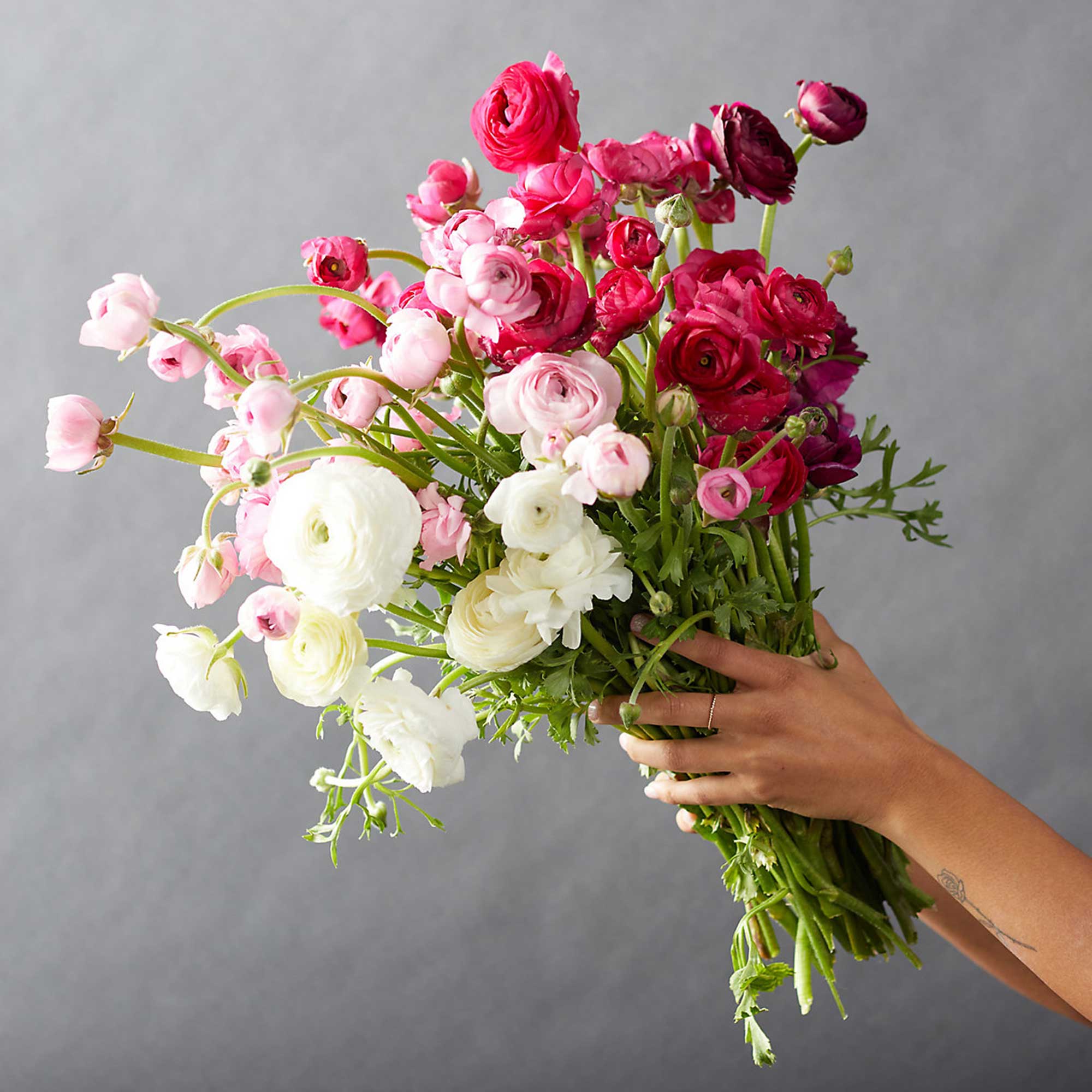
9 of the most romantic spring flowers to give this Valentine’s Day
They might not all come in shades of red, but they are seasonal, often scented, and if grown locally will be much more sustainable than traditional roses.
1. Ranunculus
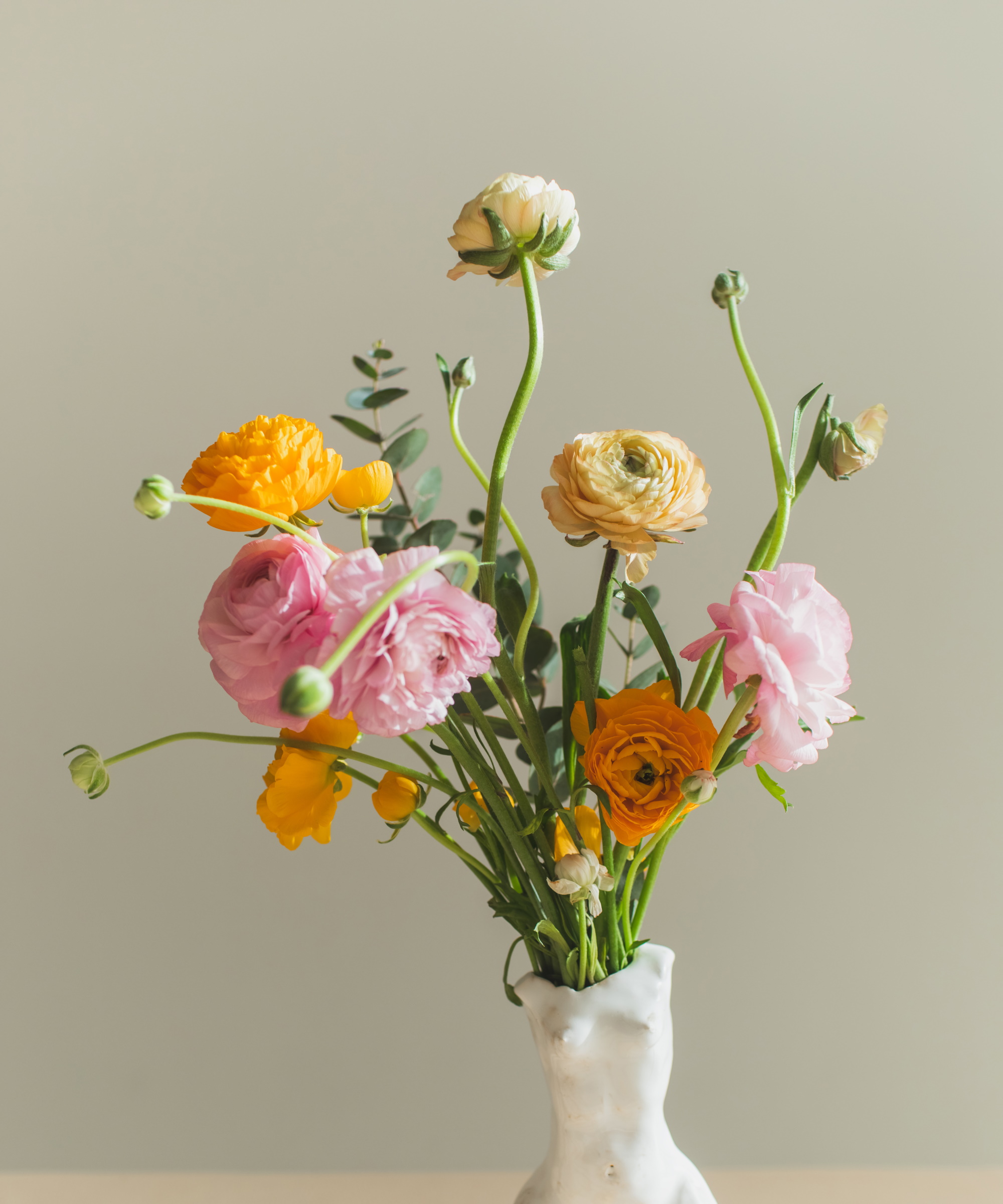
Flowering from late winter through to the end of spring, ranunculus have to be one of the best (and possibly most underrated) cut flowers to give at this time of year.
The bombastic heads of the 'cloni success hanoi' variety are fabulously large, with seemingly endless layers of ruffled petals in glorious shades of blush, ivory and salmon pink.
Ranunculus were my go-to flower of choice at this time of year when I worked as a professional florist because they last so long in the vase. If looked after properly, they will continue to give as a cut flower for up to three weeks and sometimes longer.
Top tip: Change the water in your vase every two-to-three days to ensure your flowers last as long as possible. Every time you do this, snip half an inch off each stem on the diagonal before placing your flowers back into clean water.
2. Bleeding hearts
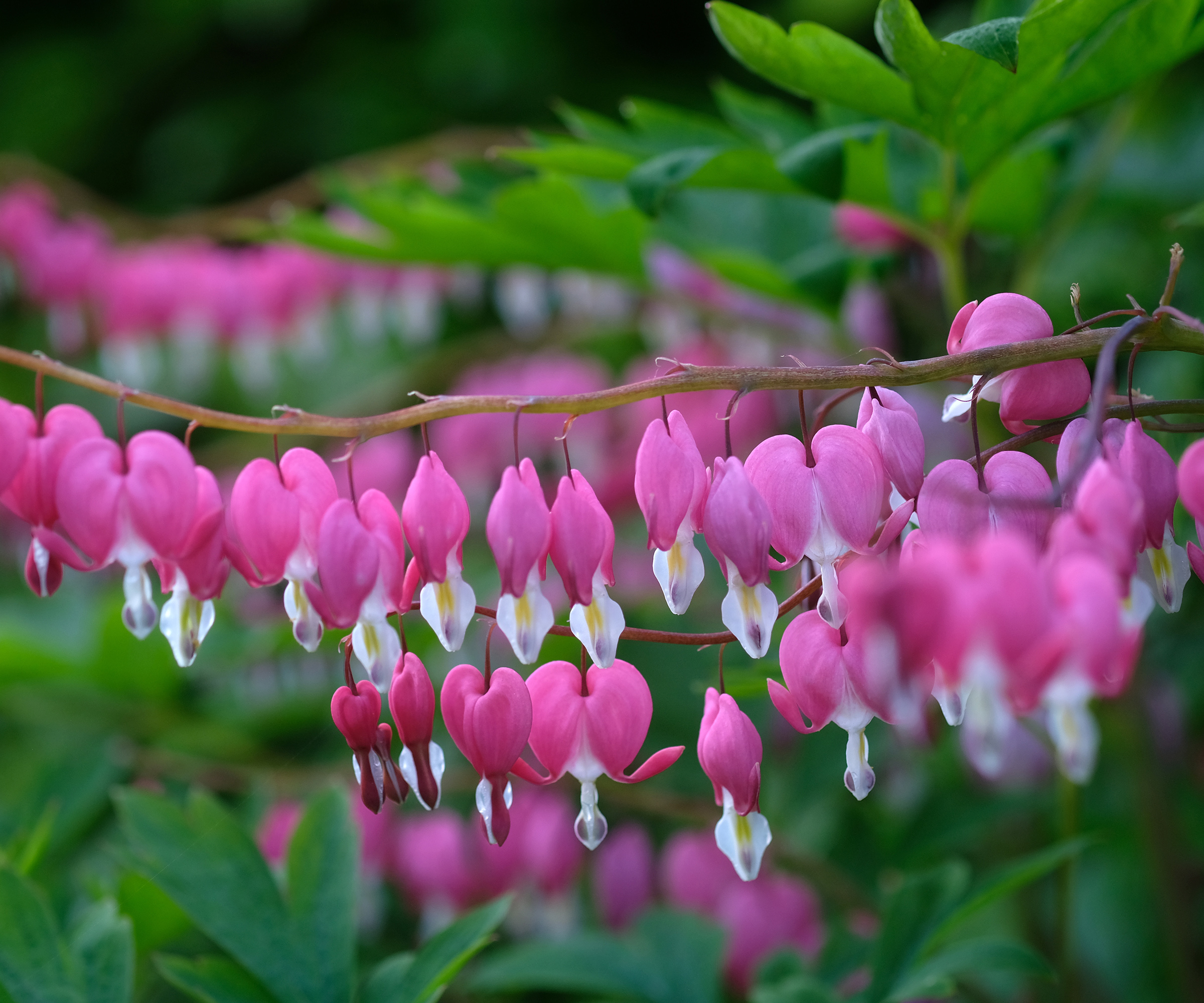
With their delicate, pendulous heart-shaped petals, it's hard not to mention the wonderful Lamprocapnos plant. You might know it better by it's former botanical name of Dicentra or its common name, bleeding hearts.
Coming in shades of white and magenta pink, these shade-loving plants flower naturally in the spring. Not a bloom you would usually see in the grocery store, I would advise contacting an artisan grower or local flower farm to see if they can supply any stems.
It might also be a little early in the season to find them as a cut flower in February, so my advice would be to look for an established plant in the garden center, such as this Dicentra spectabilis from Nature Hills, to give as a gift. As they are perennials, they will come back and delight you with flowers every year.
3. Narcissi
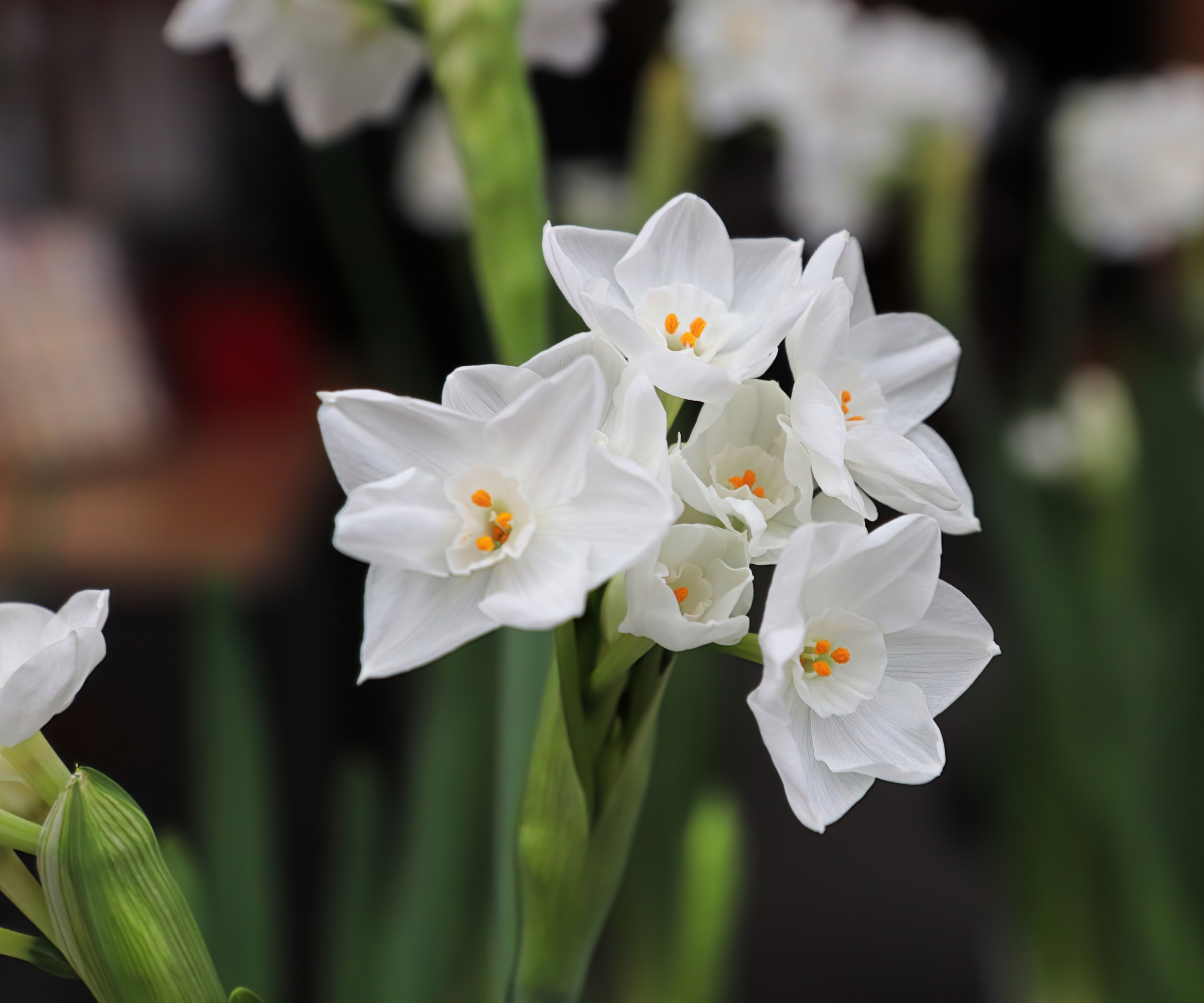
This is the ideal time of year to get your hands on some seasonal and often beautifully scented narcissi, and fill your home with the glorious feeling of spring without making a dent in your wallet.
Daffodils come in a vast range of varieties, from miniature to tête-à-tête blooms to all-white heirloom cultivars such as 'mount hood'.
When freshly cut, narcissi stems leak sap which can be harmful to other flower varieties in the same vase. I always try to keep them separate, and create a feature by placing them en masse into a large vase - this design technique can be just as striking as when you have a mixture of blooms.
4. Snowdrops
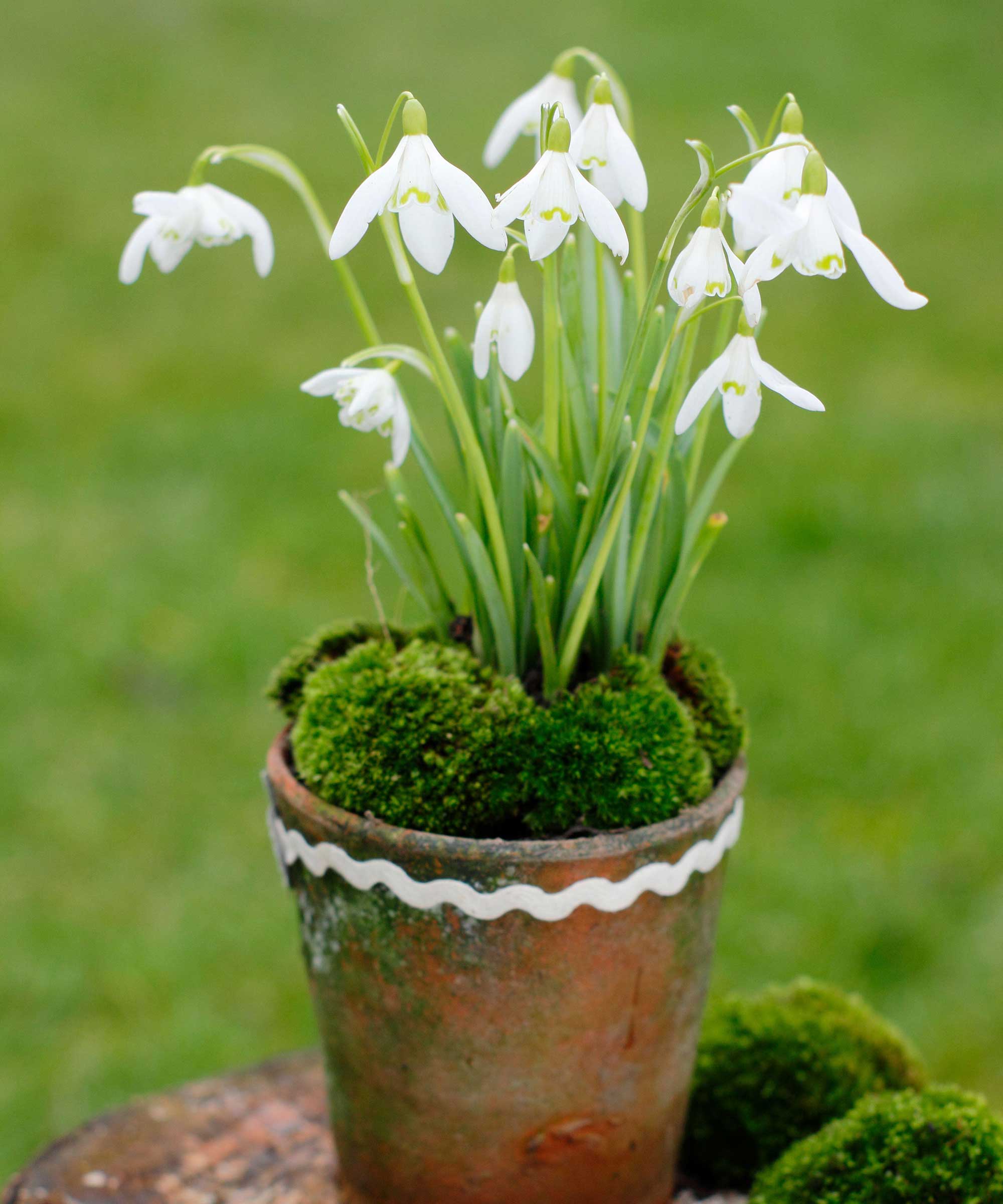
Now is the time of year we will all start to see diminutive snowdrops peeking through the soil and forming dreamy carpets of white, adding that first show of life to the yard after winter.
They may be small, but that doesn't make them any less romantic. In fact, snowdrop flower heads are amazingly intricate - some come in double varieties - and would look elegant displayed in a collection of clear glass bud vases on a mantel or dining table.
I grow a lot of snowdrops in my backyard, most have naturalized over the years under trees and hedges, and I was astounded to find stem lengths of up to 10 inches last year on some of the flowers.
5. Hoya succulents

Houseplants too, of course, can be impossibly romantic, and none more so than the gorgeous sweetheart succulent.
The leaves often appear quite a lot larger than the pot they are in, but these hoya succulents only have small, shallow roots, so it is important to keep them in a fairly small pot to ensure their roots are supported and well enclosed.
6. Anemones
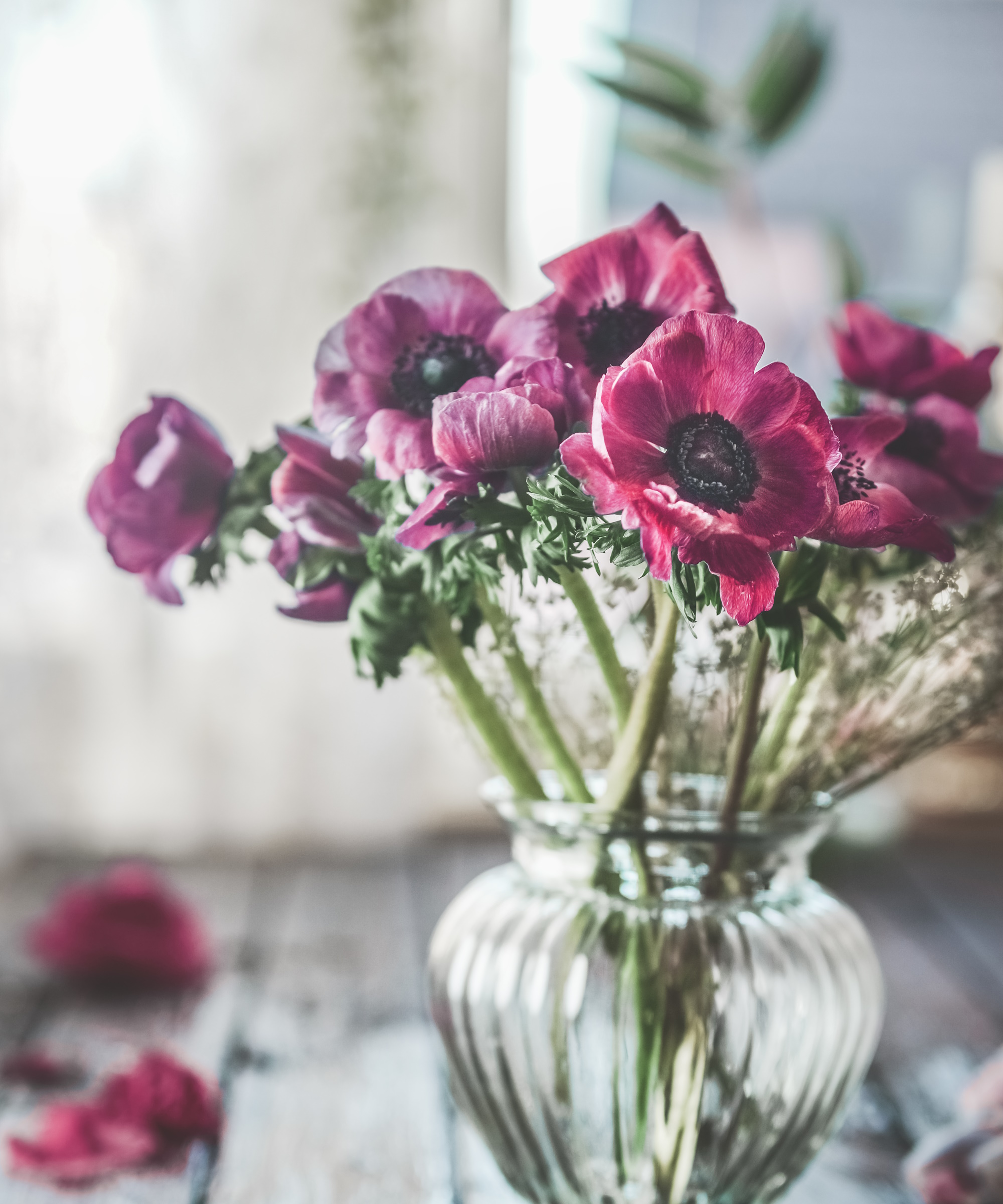
Another favorite of mine, anemones as cut flowers could not be more stylish. With their jet black centers surrounded by large, overlapping petals, these winter blooms are simply stunning and in season right now.
They come in indigo, blush, cream and vibrant red. They have a soft, hollow stem, so it's useful to re-cut stems in a vase every couple of days to avoid them going soggy and releasing unwanted bacteria into the water.
Anemones close up in the dark and open again when they see the sun, so don't be alarmed if you see your petals curling up as night falls.
7. Mimosa blossom
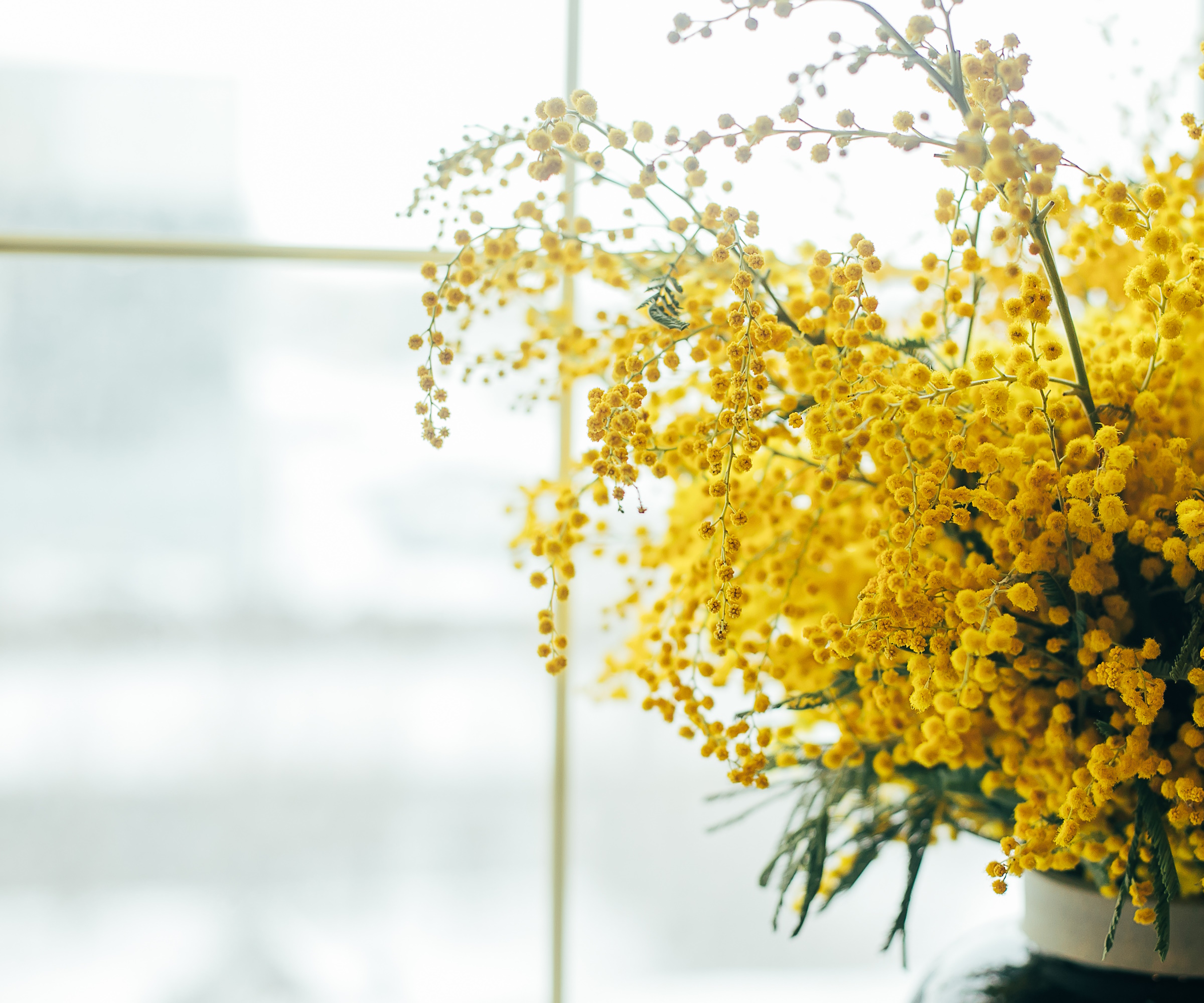
There is nothing quite like walking under an acacia mimosa tree in full blossom towards the end of winter, and breathing in the heady, spring-like perfume coming from the flowers. It's like momentarily being transported into another world.
Mimosa as a cut flower stem works amazingly well, and will last up to 10 days in a vase if kept away from heat sources and out of direct sunlight.
Display long stems in a large yellow vase, such as this textured Raawii vase from Net-a-Porter, for a maximalist display of scented sunshine.
8. String of hearts
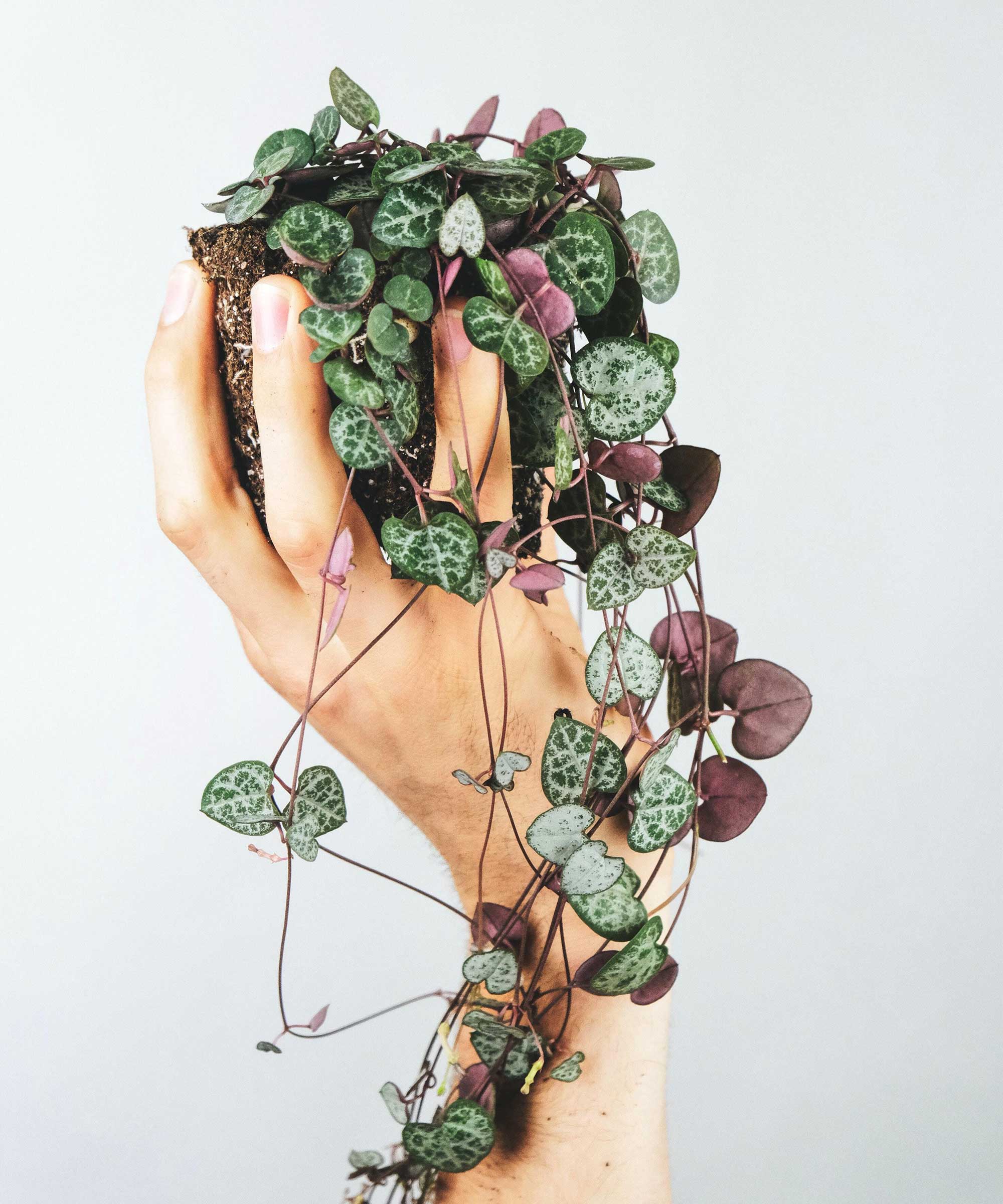
Yes, it's another heart-shaped houseplant, but it's also super cute and would make for a truly long-lasting gift.
String of heart plants produce trailing, thread-like stems covered in tiny, heart-shaped leaves. They are fairly easy to look after, and would look gorgeous styled on a bathroom shelf or cascading down from a hanging planter in a kitchen.
During its growing season in late spring and summer, this succulent will produce miniature, tubular-shaped pink flowers, and if you get close to them you might just catch a hint of nutmeg.
9. Muscari
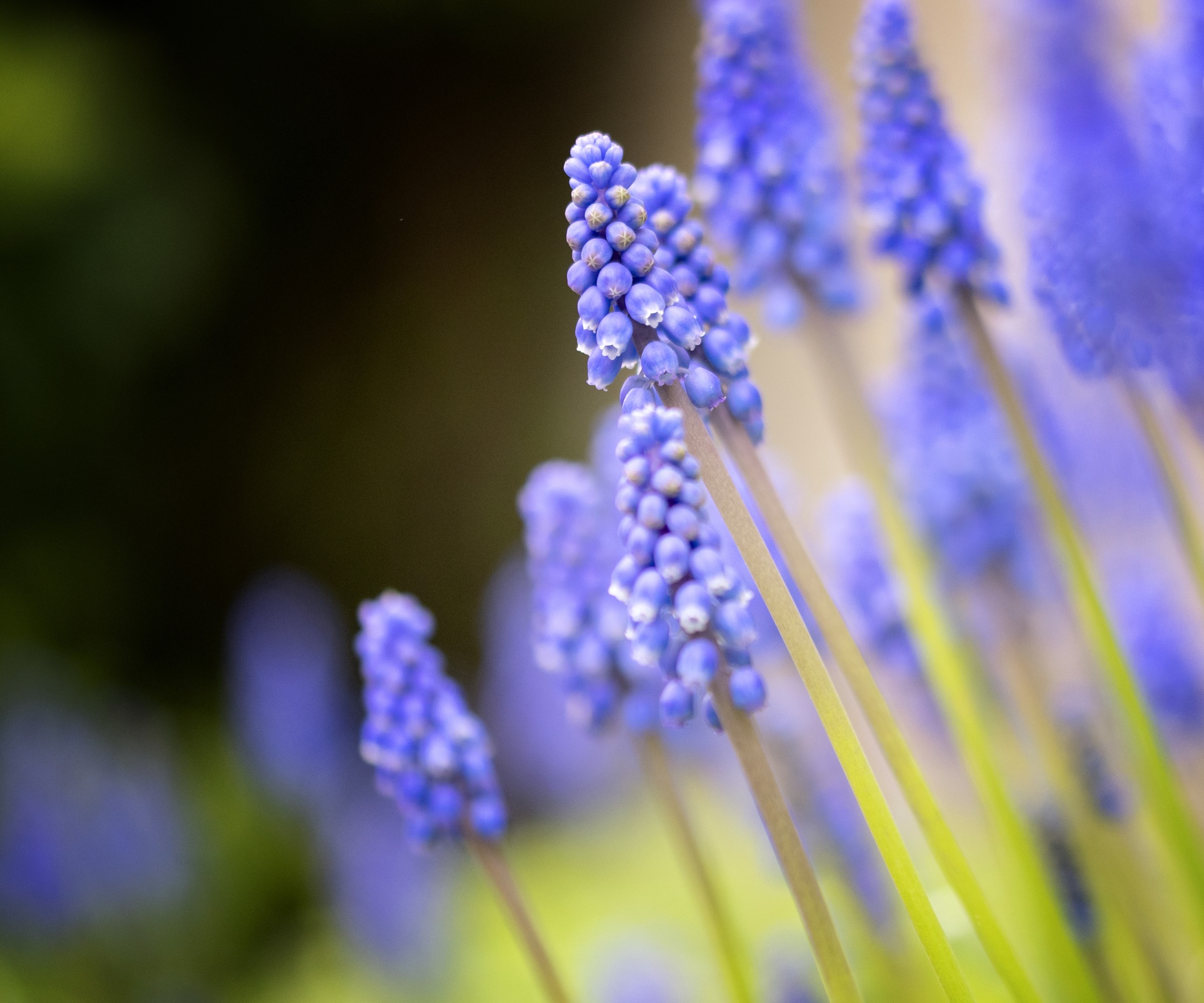
Also known as grape hyacinth, these delicate spring flowers grow from bulbs and once established tend to multiply quickly. They come in shades of indigo, pale blue, and also white, such as this mixture of muscari bulbs from Amazon.
They are often sold in pots at florists or garden centers at this time of year, and if combined with a stylish ceramic planter would make a lovely living gift.
Once they have finished flowering indoors, allow the foliage to die back before lifting out of the pot and planting - either directly into the ground or into a spring planter - in your yard.
FAQs
What are good alternatives to cut-flowers on Valentine's Day?
Houseplants or perennial flowering plants 'in the green' both make great alternative choices to cut flowers if you are looking for a Valentine's Day gift. Both are long-lasting choices, as perennial bulb flowers such as muscari, snowdrops, hellebores or anemones will come back every year in late winter or early spring if planted out in the yard.
While roses will always have a romance attached to them, there are so many other cut-flower alternatives out there when you consider the seasons. If you're keen to learn more about growing your own this year, you might be interested in our guide on how to plant a flower bed.
Sign up to the Homes & Gardens newsletter
Design expertise in your inbox – from inspiring decorating ideas and beautiful celebrity homes to practical gardening advice and shopping round-ups.

Rachel is a gardening writer, flower grower and floral designer. Her writing career began on Country Living magazine, sparking a love of container gardening and wild planting. After more than a decade writing for and editing a range of consumer, business and special interest titles, Rachel became editor of floral art magazine The Flower Arranger. She then worked as a floral designer and stylist for six years, before joining Homes & Gardens. An expert in cut flowers, she is particularly interested in sustainable gardening methods and growing flowers and herbs for wellbeing. In summer 2024, she was invited to Singapore to learn about the nation state's ambitious plan to create a city in nature, discovering a world of tropical planting and visionary urban horticulture.
-
 Martha Stewart's intelligent cabinets 'take every inch into consideration' – their 'visually light' style will solve your small kitchen storage problems
Martha Stewart's intelligent cabinets 'take every inch into consideration' – their 'visually light' style will solve your small kitchen storage problems'Every kitchen can be beautiful and functional, no matter what the size': 9 years since sharing her clever storage, Martha's cabinets are just as beautiful
By Megan Slack
-
 This once-dated kitchen is now a timeless space with the coziest details – and its the classic color palette that's made it a chic, welcoming space
This once-dated kitchen is now a timeless space with the coziest details – and its the classic color palette that's made it a chic, welcoming spaceWarming colors and natural materials combine to create this enduringly classic kitchen scheme
By Molly Malsom